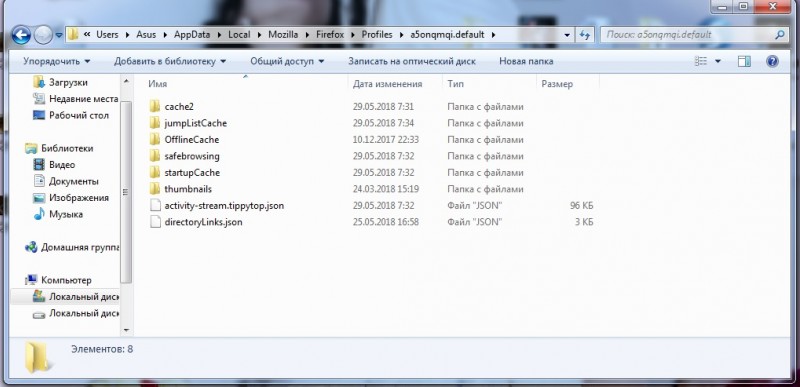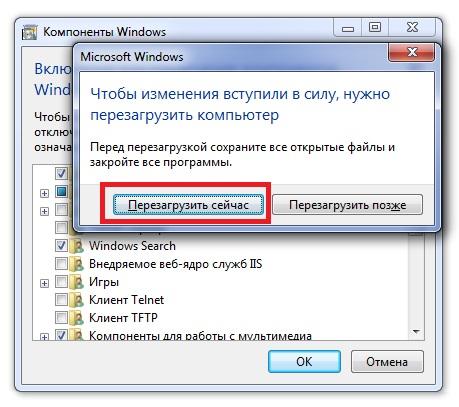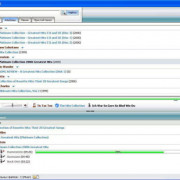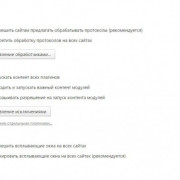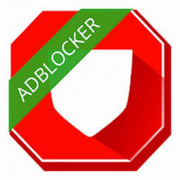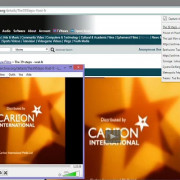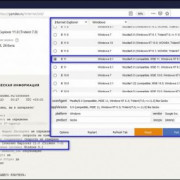Internet
Содержание:
- Disabling a Portable App’s Splash Screen
- Using a Portable App
- Upgrading a Portable App
- Как обновить google chrome portable
- Как скачать любую версию google chrome portable rus
- Installing a Portable App
- An app says it ‘did not close properly’ when started
- Downloading a Portable App
- Как скачать и запустить портативный гугл хром
Disabling a Portable App’s Splash Screen
Many apps packaged in PortableApps.com Format include splash screens so the user sees quick feedback an app is starting on slower flash media and doesn’t accidentally try to start it again. The splash screens also serve to let users know that they’re using a repackaged version of an app and to visit us first for portable support issues. If you’d prefer not to see the splash screen, disabling it is a snap.
PortableApps.com Platform — Click Options and select the Advanced tab. There, you’ll see a checkbox to disable splash screens across all our apps. Note that this will only affect splash screens shown by the PortableApps.com Launcher and not splash screens displayed by the apps themselves (GIMP, LibreOffice, etc).
Standalone — Within the AppNamePortable\Other\Source directory (where AppName is the name of the app you’re working with), you’ll find an AppNamePortable.ini file that includes some example options. Copy this file to the AppNamePortable directory and rename it, if necessary, to the name of the app (FirefoxPortable.ini or similar). Open the file within your preferred text editor, something like Notepad++ Portable. Within, you’ll find an entry DisableSplashScreen=false which just needs to be set to true. Save the file and the app will launch without the splash screen. This setting will be remembered as you upgrade the app, too.
Some apps include their own splash screen within the apps themselves (GIMP, LibreOffice, Scribus, etc). For these splash screens, there is sometimes an option within the Options of the app to disable it, a specific text file to modify, or a command line option to pass (which the PA.c Launcher can usually pass via the AdditionalParameters= setting in the INI file mentioned in the «Standalone» section above. You’ll need to check the app’s documentation from the publisher to be sure.
Using a Portable App
If you’re using the PortableApps.com Platform, to start your portable app, just click its icon within the menu.
If you’re running it standalone, browse to the directory you installed the AppNamePortable directory you installed to and then double-click the AppNamePortable.exe file. Then, just use the app as you’d use the regular version.
While using portable software, there are a couple of things to keep in mind:
- Stay Safe — When using portable apps, it’s always a good idea to practice Safe Portable App-ing.
- Close Apps Before Ejecting/Shutting Down — When you’re done, close all your portable apps and the PortableApps.com Platform. The platform can automatically close all your running portable apps for you and eject your drive or prompt to shut down your computer. If using an external drive without the PortableApps.com Platform, select the ‘Safely remove ‘ option from the icon in the system tray. If you remove the drive while it is in use, you could corrupt your apps and lose your data. If you shutdown Windows while a portable app is still running, it may not get to save its settings and remove any local data before closing.
Upgrading a Portable App
PortableApps.com Platform Updater (Recommended) — To upgrade your apps using the platform’s built-in updater, just select Help and then Check for Updates. The platform will inform you what apps are out of date and offer to automatically download and install the updated versions.
PortableApps.com Platform Manual — To upgrade a portable app from the PortableApps.com Platform manually, first, make sure the app isn’t open. Then, click Apps and then Install a New App. In the window that comes up, click the Install button. Then, browse to the AppNamePortable_x.x.paf.exe file you downloaded and select it. Now, follow the on-screen prompts if there are any. The Platform takes care of letting the installer know where to install to. All of your current settings and data will be preserved.
Standalone — To upgrade a portable app manually without the PortableApps.com Platform, just browse to the location of the AppNamePortable_x.x.paf.exe file you downloaded. Double-click the file to start the installation. Follow the on-screen prompts and select the location you’d like to install to. For upgrades, you should select the parent directory of the AppNamePortable directory in which the app is currently installed. For example, if the app is within X:\PortableApps\AppNamePortable, you’d want to select the X:\PortableApps directory in the Browse Folder window. After clicking OK, it should show X:\PortableApps\AppNamePortable. All of your current settings and data will be preserved.
Как обновить google chrome portable
К сожалению портативные версии не могут автоматически обновляться. Вы можете только удалить старую версию и скачать новую, если конечно найдете.
ВНИМАНИЕ: в интернете есть только несколько надежных сайтов, для скачивания этого браузера, хотя предлагают такую возможность сотни, причем на первых страницах выдачи поисковиков. Будьте осторожны
Вместе с этой программой, может подхватить вирус или расширения, которые потом не удалите, а оно вас так взбесит, что решите виндовс переустановить, только бы от него избавится
Будьте осторожны. Вместе с этой программой, может подхватить вирус или расширения, которые потом не удалите, а оно вас так взбесит, что решите виндовс переустановить, только бы от него избавится
Есть правда еще один вариант. Вы можете самостоятельно переделать любую программу в portable.
Как скачать любую версию google chrome portable rus
Название раздела немного не соответствует описанию, точнее было бы его назвать как сделать самом портативную версию портабле любой программы включая хром.
Здесь вы скачаете последнюю версию 43.0.2357.81, если через загрузчика. В сети можно найти последнюю бета –это более новые, но находящиеся на стадии тестирования.
Любители портативных программ, могут скачать бесплатную программу: «Cameyo» и сделать себе из обычных портативные, например, версии 35.0 1916.153, 41.0 2272.101, 41.0 2272.118, 42.0 2311.90, 42.0 2311.135. Успехов.
Разработчик:
google chrome
Операционка:
XP, Windows 7, 8, 10
Лицензия:
Бесплатная
Файлы на скачивание
на данный момент
не доступны.
Installing a Portable App
The easiest way to install an app is to use the PortableApps.com Platform’s built-in app store as described above in Downloading a Portable App, as downloading and installing are done automatically in one operation. You can also install apps without the app store and even without our platform…
PortableApps.com Platform Manual Installation — To install a portable app to the PortableApps.com Platform, just click Apps and then Install a New App. In the window that comes up, click the Install button. Then, browse to the AppNamePortable_x.x.paf.exe file you downloaded and select it. Now, follow the on-screen prompts if there are any. The Platform takes care of letting the installer know where to install to.
Standalone Installation — To install a portable app by itself, or manually, just browse to the location of the AppNamePortable_x.x.paf.exe file you downloaded. Double-click the file to start the installation. Follow the on-screen prompts and select the location you’d like to install to. If the installer detects an existing PortableApps directory on one of your attached drives or within your USERPROFILE folder, it will automatically select that. Otherwise, the current directory will be selected by default. Within the directory you select, an AppNamePortable directory will be created containing the portable app. Note that installing to the C:\Program Files or equivalent is not supported.
An app says it ‘did not close properly’ when started
You may see an error stating that «AppName Portable did not close properly last time it was run and will now clean up. Please then start AppName Portable again manually.» When you see this, it means that the portable app’s launcher did not close and clean up properly the last time the app was used. This can be caused by a system crash, an unsafe drive eject, or shutting Windows down without first closing an app. When this occurs, the portable launcher may not have been able to remove app data from the local disk, restore local app data back to the proper location, move portable app data to the proper directory for backups and upgrades, or similar.
The easiest way to prevent this, is to use the PortableApps.com Platform’s «Close Apps on Platform Exit» feature. This will automatically close your portable apps safely without causing data loss or leaving any data behind on the local machine. It includes specialized logic to close apps that don’t properly respond to Windows shutdown app close messages as well. Apps in PortableApps.com Format as well as those that are natively portable will be detected and asked to close. The platform will even warn you about any running apps that did not respond to the request to close (LibreOffice having a document open with unsaved changes, for instance).
Ideally, we would like the error message to be dismissable and not require another launch of the AppNamePortable.exe launcher. Unfortunately, this is not possible at present due to the way the PortableApps.com Launcher is written. Adding this feature will take a major rewrite of sections of the PortableApps.com Launcher and our volunteer developers do not have time at present. We hope to add this in a future release.
Additionally, we would like to adjust the PortableApps.com Launcher to detect and respond to Windows shutdown messages directly. This will likely require a rewrite of the launcher in a different programming language, so it will take quite a bit of time and effort to achieve.
Downloading a Portable App
PortableApps.com Platform — The easiest way to download new portable apps is to use the PortableApps.com Platform’s . Just click Apps from the PortableApps.com Menu and select Get More Apps. From there, you can view apps by Category, Alphabetically, Recently Updated or New Releases
Standalone — To download apps directly from PortableApps.com without our platform, just click the Download button from the application’s page. You’ll see a SourceForge download page that automatically selects a download server close to you and redirects you to the download. (If you’re using Internet Explorer, you may need to click the direct download link on this page. It appears as «If you are experiencing problems with the download please use this direct link» on the SourceForge page.) When you download the file, save it to a location you can easily find later like your Desktop or Downloads folder.
Как скачать и запустить портативный гугл хром
У вас есть на выбор две версии. Первая это онлайн установщик. Вначале скачиваете небольшой файлик, за несколько секунд и начинается установка.
Только если у вас стандартная версия не установилась и не захотела работать, проблемы могут появится и с загрузчиком, хотя лучше все-таки попробовать через загрузчика.
Второй вариант (ссылке ниже) это уже полностью работоспособный браузер и от вас потребуется только его распаковать – должен работать у всех.
При использовании второго варианта, создайте себе папку, можно на рабочем столе (не обязательно).
Потом кликните дважды на скачанный браузер и в появившемся окне нажмите далее.
Потом еще раз далее.
Теперь ставим птичку напротив строки: «распаковка google chrome», а не установка и опять кликаем далее.
Теперь, щелкните на обзор и укажите на папку, в которую хотите распаковать файлы, и жмите установить, хотя можете оставить все как есть.
Установится x86 – ‘будет работать на 64 bit и32 bit. В последнем окне можете снять галочки и жмите готово.
Все. Теперь откройте папку куда установили google chrome portable, в ней еще одну и на соответствующий значок, подождите с минуту и пользуйтесь. При желании, выведите для удобства значок на рабочий стол.

